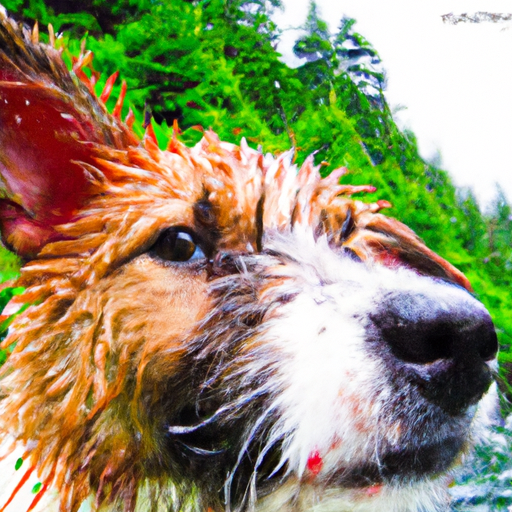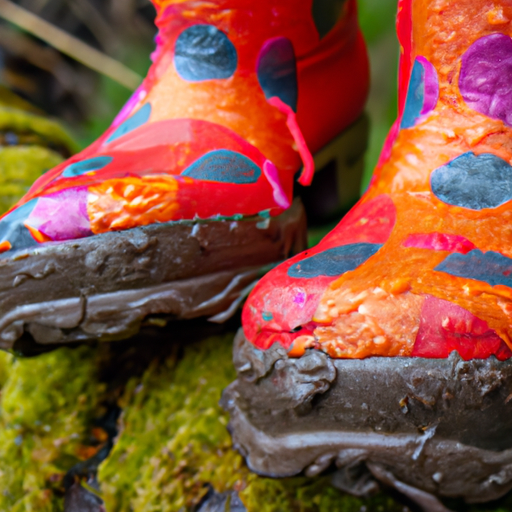Imagine the pure joy of riding your bike through the colorful autumn leaves, with the wind in your hair and your loyal four-legged companion by your side. In this article, we will explore the exciting world of bike riding with your dog. Discover the benefits of this adventurous activity and learn valuable tips to ensure a safe and enjoyable experience for both you and your furry friend. So, grab your helmet, buckle up your dog's harness, and get ready for a thrilling ride through the great outdoors!
Choosing the Right Bike
When it comes to bike riding with your dog, choosing the right bike is crucial. Consider your dog's size and breed to ensure they can comfortably and safely accompany you on your rides. Larger and more active dogs may require a sturdier bike with a larger frame, while smaller dogs may be better suited for a bike with a smaller frame.
Look for a bike with a stable frame that can withstand the extra weight and movement of your dog. A bike with a low center of gravity is also important, as it provides better balance and stability when your dog is by your side. This can help prevent accidents and provide a smooth and enjoyable ride for both you and your furry friend.
Additionally, make sure the bike has a strong and reliable braking system. This is crucial for your dog's safety, as you may need to stop abruptly in certain situations. A bike with responsive brakes will allow you to maintain control and ensure your dog's well-being.
Lastly, choose a bike with a comfortable and adjustable seat. You'll be spending a considerable amount of time on your bike, and it's essential that both you and your dog are comfortable. Look for a seat that provides ample cushioning and can be adjusted to find the perfect riding position for you.
Preparing Your Dog
Before hitting the trails, it's important to prepare your dog for bike riding. This involves gradually introducing them to the bike and training them to walk alongside it.
Start by getting your dog used to the bike while it's stationary. Allow them to sniff and investigate the bike while providing positive reinforcement, such as treats and praise. This will help them associate the bike with positive experiences.
Once your dog is comfortable around the bike, begin training them to walk alongside it on a leash. Start with short walks and gradually increase the distance and duration. Use positive reinforcement to reward your dog for staying by your side.
Introduce your dog to wearing a doggy harness, which will provide better control and prevent any strain on their neck. Allow them to become accustomed to wearing the harness during walks and gradually incorporate it into your bike rides.
Teach your dog basic commands that are essential for biking, such as “stop,” “slow,” and “heel.” These commands will help you communicate with your dog during the ride and ensure their safety.
Lastly, ensure your dog is in good health before embarking on bike rides. Regular vet check-ups and monitoring their overall fitness are important to prevent any health issues during the rides.
Safety Measures
Safety should always be a top priority when biking with your dog. Taking the necessary safety measures will ensure a safe and enjoyable experience for both of you.
Always use a doggy bicycle leash that attaches securely to your bike. This will keep your dog at a safe distance from the wheels and give you control over their movements. Make sure the leash is the appropriate length to prevent tangling or tripping hazards.
Make sure your dog wears reflective gear, such as a reflective collar or vest, to increase their visibility to motorists and other cyclists. This is particularly important when biking during dawn, dusk, or in low-light conditions.
Consider using a bike helmet for your dog to protect their head in case of any accidents or falls. There are specially designed helmets for dogs available that provide both protection and comfort.
Before heading out, check the weather conditions to ensure it's safe for biking with your dog. Extreme heat, cold, or heavy rains can pose risks to both you and your furry companion. It's best to avoid biking during unfavorable weather conditions.
Avoid riding during peak traffic hours to minimize the chances of encountering heavy traffic and potential accidents. Opt for quieter times of the day when there are fewer vehicles on the road, creating a safer environment for you and your dog.
Choosing the Right Trail
The trail you choose for your bike rides with your dog can greatly impact your overall experience. Consider the following factors when selecting a trail suitable for biking with dogs.
Pick a trail that is dog-friendly and specifically allows dogs. Some trails have restrictions or specific rules regarding dogs, so it's essential to choose a trail where your furry friend is welcome.
Consider the length and difficulty of the trail based on your dog's fitness level and endurance. Start with shorter and easier trails if you and your dog are new to biking, and gradually progress to longer and more challenging trails as both of you gain more experience.
Look for trails that offer shaded areas for rest breaks. Dogs can get overheated easily, so having shaded spots along the trail will allow your dog to take breaks and cool down when needed.
Ensure the trail is well-marked and maintained. A well-marked trail will prevent you from getting lost and allow you to focus on enjoying the ride with your dog. A well-maintained trail will also minimize the risk of injuries caused by loose rocks, tree branches, or other hazards.
Hydration and Snack Breaks
Proper hydration and nutrition are important for both you and your dog during bike rides. Here are some tips to keep your furry companion hydrated and energized throughout the ride.
Bring fresh water and a portable water bowl specifically designed for dogs. It's crucial to keep your dog hydrated, especially during warmer weather. Take breaks at regular intervals and offer water to your dog to prevent dehydration.
Pack portable dog bowls that are lightweight and easy to carry. These bowls will allow your dog to drink comfortably without causing any spills or inconvenience.
Take breaks in shaded areas to provide your dog with a chance to rest and cool down. Overheating can be dangerous for dogs, so giving them a break in a shaded spot will help regulate their body temperature.
Offer healthy snacks to refuel your dog during longer rides. Pack treats or small portions of dog-friendly snacks that provide energy and nutrition. However, avoid feeding your dog immediately before the ride to prevent discomfort or digestive issues.
Proper Bike Riding Techniques
Using proper bike riding techniques is essential for ensuring a safe and enjoyable experience for both you and your dog. Here are some tips to keep in mind while biking with your furry companion.
Start with short rides to build up your dog's endurance gradually. Just like humans, dogs also need time to adapt to the physical demands of biking. Begin with shorter distances and slowly increase the length of your rides as your dog becomes more comfortable.
Maintain a comfortable and consistent pace throughout the ride. Sudden changes in speed or erratic movements can startle your dog and lead to accidents. Find a pace that both you and your dog are comfortable with and stick to it.
Use hand signals to communicate turns or any necessary actions. Dogs can't understand verbal cues while biking, so using hand signals will help them understand your intentions. Teach your dog to recognize and respond to these signals during your training sessions.
Keep a safe distance between your bike and your dog. This will prevent the bike from accidentally hitting your dog or causing any injuries. Use the leash to maintain a safe and appropriate distance at all times.
Adjust your biking technique based on your dog's behavior. Pay attention to their signals and body language. If your dog seems tired or uncomfortable, take breaks or adjust your pace accordingly. It's important to prioritize your dog's well-being and make adjustments as needed.
Dealing with Distractions
Distractions are bound to arise during bike rides. Training your dog to ignore distractions and stay focused on the ride is important for their safety and your overall experience. Here are some tips to help deal with distractions.
Train your dog to ignore distractions by gradually exposing them to various scenarios during your training sessions. Start with mild distractions and progress to more challenging ones as your dog becomes more adept at focusing on you and the ride.
Use positive reinforcement to redirect your dog's focus back to you. Reward them with treats, praise, or toys when they successfully ignore distractions and stay focused on the ride. This will reinforce good behavior and encourage them to stay focused in the future.
Teach your dog to stay on one side of the bike, preferably on your non-dominant side. This will prevent them from getting too close to the wheels or obstructing your path. Practice this command during your training sessions and enforce it during your bike rides.
Avoid crowded areas with excessive stimuli, such as busy parks or city streets, especially when you and your dog are still in the early stages of training. These environments can be overwhelming for your dog and increase the chances of distractions and accidents.
Start practicing in quieter locations with fewer distractions before tackling busy areas. Gradually expose your dog to more challenging environments to build their focus and concentration gradually.
Post-Ride Care
After a bike ride, it's important to take care of your dog's well-being and ensure they recover properly. Here are some post-ride care tips to keep in mind.
Inspect your dog for any injuries or ticks. Check their paws, legs, and body for any signs of cuts, bruises, or ticks. Attend to any injuries as needed and remove any ticks promptly to prevent any potential health issues.
Provide your dog with a cool-down period. Allow them to rest in a calm and comfortable area to let their body temperature normalize. Offer them water and allow them to relax before resuming any other activities.
Clean your dog's paws and remove any debris. Biking trails can have various elements that may get stuck in their paws, such as twigs, rocks, or dirt. Gently clean their paws and ensure they're free from any irritants.
Offer your dog fresh water and food after the ride to replenish their energy levels. Just like humans, dogs need proper nutrition after physical activities to recover and restore their energy.
Reward your dog for a successful ride. Praise and treats are a great way to show your appreciation and reinforce positive behavior. This will create a positive association with bike riding and make future rides more enjoyable for your dog.
Benefits of Bike Riding for Dogs
Bike riding with your dog offers numerous benefits, both for their physical and mental well-being. Here are some advantages of bike riding for dogs.
Helps maintain a healthy weight: Regular exercise through bike riding helps burn calories and maintain a healthy weight for your dog. This can prevent obesity and related health issues.
Improves cardiovascular fitness: Biking is an excellent aerobic exercise that strengthens the cardiovascular system, improving your dog's heart health and endurance.
Provides mental stimulation: Bike rides expose your dog to new sights, sounds, and smells, providing mental stimulation and preventing boredom. This can help reduce behavioral issues caused by excess energy or boredom.
Strengthens the bond between dog and owner: Bike rides offer a unique opportunity for you and your dog to spend quality time together, strengthening the bond between you. Sharing new experiences and adventures creates a strong sense of companionship.
Reduces anxiety and behavioral issues: Regular exercise, such as bike riding, can reduce anxiety and help alleviate behavioral issues in dogs. Physical activity releases endorphins that promote feelings of relaxation and well-being.
In conclusion, bike riding with your dog can be a rewarding and enjoyable activity for both of you. By choosing the right bike, preparing your dog properly, taking safety measures, selecting the right trail, ensuring hydration and snack breaks, using proper bike riding techniques, dealing with distractions, practicing post-ride care, and recognizing the benefits of bike riding for dogs, you can create a safe and fulfilling experience for both you and your furry companion. So gear up, hit the trails, and enjoy the great outdoors with your loyal and adventurous friend!






